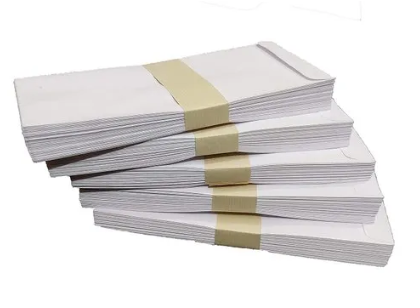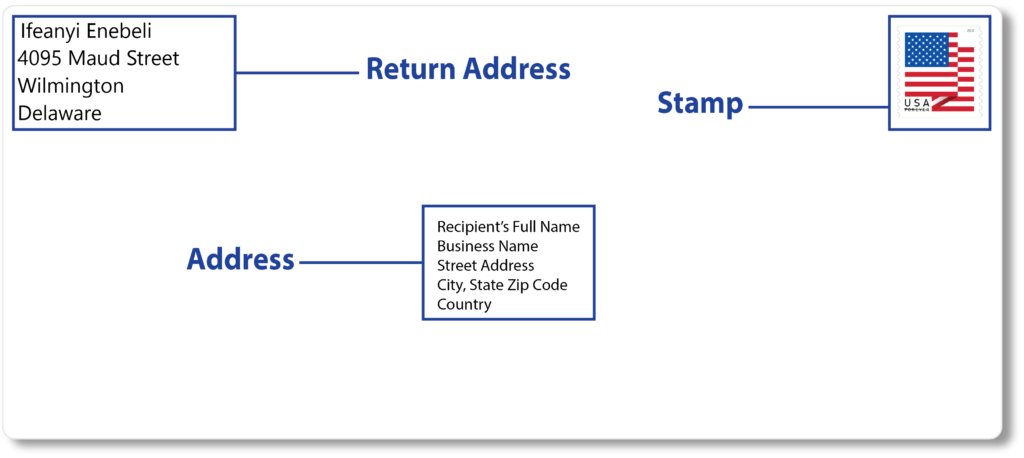Ever held an envelope, staring at it blankly, unsure of where each detail goes? You’re not alone it happened to the best of us for the first time. For many, the art of addressing envelopes seems simple until they’re handed a pen, and boom, the task suddenly feels monumental. But here’s the thing: it’s more than just about getting a letter to its destination; it’s about the impression you leave even before the envelope is opened.

The Importance of Correctly Addressing an Envelope
Addressing envelopes correctly might seem like a tiny detail in the grand scheme of things, but small details often matter the most. For one, a wrongly addressed envelope might not reach its intended recipient. Imagine sending a birthday card with money inside or important business documents, only for them never to reach their destination because of a simple oversight. Heartbreaking, right?
Moreover, an accurately addressed envelope ensures your mail doesn’t end up in a stranger’s mailbox, respecting their privacy and yours.
First Impressions Matter:
Before your letter is even opened, the recipient has already formed an opinion. An untidy, scribbled address may seem unprofessional and hurried, while a neatly addressed envelope conveys thought and effort. The envelope is the first touchpoint, setting the tone for what’s inside.
Whether it’s an invitation, an official document, or a simple note, a well-addressed envelope communicates respect for the recipient. It tells them: “I cared enough to get this right.”
Now, Let’s Break Down the How-To:
1. Placement
Where you place the address on the envelope is crucial.
- Return Address: This goes on the top left corner. It’s your backup. If, for any reason, your mail cannot be delivered, it’ll find its way back to you.
- Recipient Address: This one’s the star of the show! Center it on the envelope, ensuring it’s the most prominent detail. It should sit closer to the right bottom half of the envelope, leaving space above for stamps or any postal markings.
2. Components of the Address
Each element of an address has its rightful place:
- Name: Always start with the recipient’s name. In a more formal context, you might use titles like Mr., Mrs., or Dr.
- Street Address: This is typically the next line. If an address is lengthy, it’s okay to split it into two lines.
- City, State, Zip: Follow the street address with the city, followed by the state and zip code.
- Country: If you’re sending your mail internationally, you’ll want to include the country on the last line.
3. Legibility
Remember, your envelope will be read by both machines and humans. It’s vital to keep your writing legible.
- Handwritten: If you’re hand-writing the address, take your time. Slow down a bit, and ensure your writing is neat and readable. Opt for black or blue ink.
- Printed: If you’re printing the address, use a clear font like Arial or Times New Roman. A font size between 10 and 12 works best for most envelopes.
- Avoid Cursive: Although cursive writing is beautiful, it’s not always easy for everyone (or every machine) to read. It’s better to save cursive for the letter inside.
4. Business vs. Personal
There’s a slight variation when it comes to business vs. personal envelopes:
- Business: Here, precision is key. Use official titles, and if you know the department the letter is directed to, include that as well. For example: Ms. Jane Smith
Marketing Department
ABC Corporation
123 Business Rd.
New York, NY, 10001 - Personal: With personal letters, you can be a tad bit more relaxed. Feel free to use nicknames if it’s someone close to you. However, the core structure remains the same.
Don’t Forget the Stamp!
While we’ve covered the nuances of addressing an envelope, it’s crucial to note that no envelope is ready to be mailed without the appropriate postage. Stamps act as a payment for the service provided by postal agencies. They signal to postal workers that the sender has covered the cost of delivery.
Before sealing and sending off your envelope:
- Check the weight: Different weights and sizes might have varying postage costs. A regular letter will typically cost less than a bulky envelope or a package.
- Consider the destination: Sending mail internationally will usually cost more than domestic mail. Ensure you use the appropriate international stamp or sufficient postage.
- Buy the right stamp: Visit your local post office or check
- online for the current postal rates. Many post offices also have self-service kiosks that weigh your mail and dispense the correct postage.
- Placement: Once you have the right stamp, place it on the top right corner of the envelope.
Remember, without the correct postage, your meticulously addressed envelope might not reach its intended destination or could cause inconvenience for the recipient.
Addressing Envelopes Sample

Conclusion:
In today’s digital age, receiving a physical letter is rare and special. The effort of choosing paper, writing a message, and sending it off deserves equal effort in the addressing. Remember, it’s not just about ensuring your mail reaches the right mailbox; it’s about making the recipient feel valued, even before they break the seal.
So, next time you’re about to send off a letter, take a moment. Ensure the address is correct, legible, and neatly presented. In doing so, you’re not just sending a letter; you’re sending a piece of respect, care, and thoughtfulness. Happy mailing!

